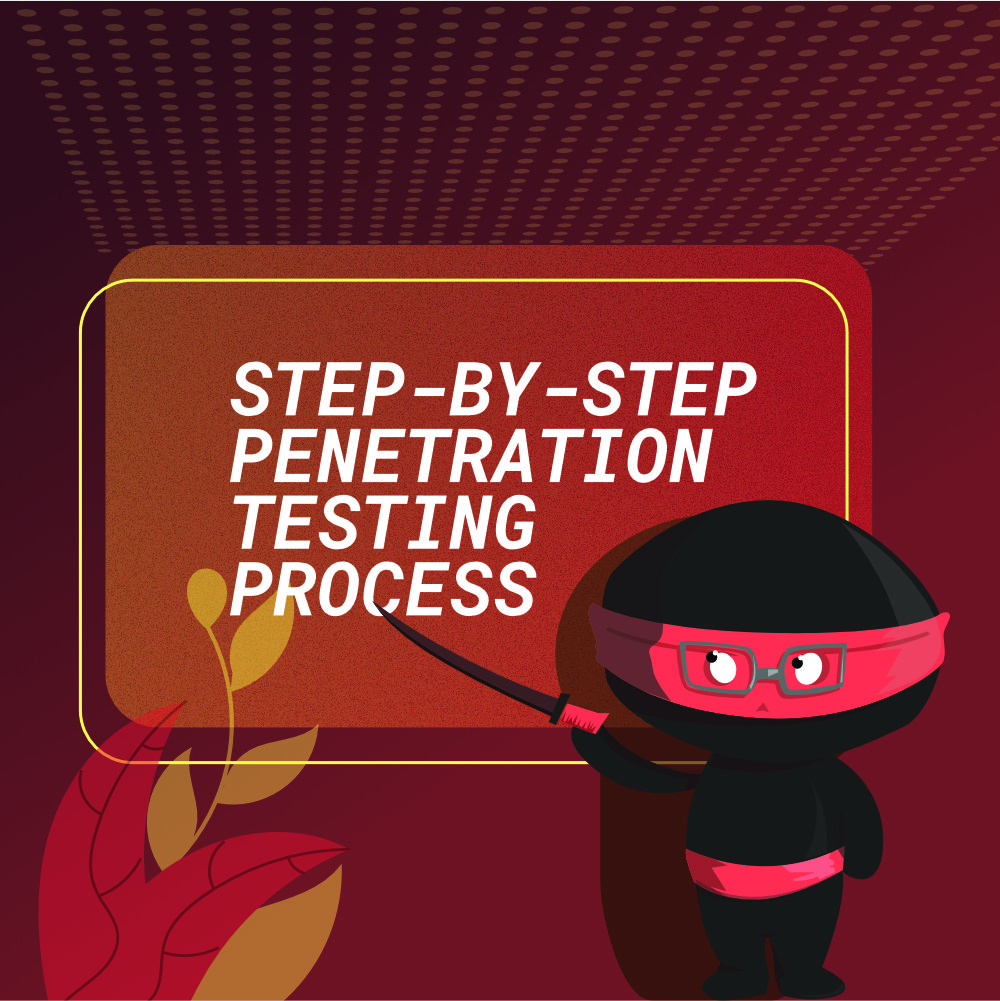What is Penetration Testing | Step-By-Step Process
by Ben Brown | 04/24/2023

by Ben Brown | 04/24/2023

Penetration testing is a simulation of a hacking attack and how your IT infrastructure would hold up against one. The purpose of penetration testing is to find vulnerabilities in your organisation's computer systems, networks and web applications that could be exploited by hackers. Penetration testing is typically performed by certified ethical hackers who attempt to infiltrate company networks to discover vulnerabilities and flaws in the system. A typical penetration test will include both simulated attacks as well as real ones. After a penetration test has been completed and vulnerabilities have been identified, it is up to security teams and their vendors to patch those flaws before they can be exploited by real attackers. Penetration testing should happen at least once per year in order to maintain a secure network environment.
An ethical hacker performs real-world attacks on your network, but in a controlled environment. This gives you the opportunity to see what areas need improvement before they become an issue in the real world. Penetration testing can be performed by certified ethical hackers who use various tools and techniques to simulate real-world cyberattacks on your organisation's systems, networks and applications. They look for vulnerabilities in these systems so that they can be fixed before they cause damage or fall victim to an attack by malicious actors from inside or outside of your organisation.
Patching vulnerabilities is a good way for businesses to protect themselves against cyberattacks. If you don't know what the vulnerabilities are in your business or how they can be fixed, then consider hiring an ethical hacker who will perform a penetration test on your company's network. This type of service can help identify any holes in your system's defences so that they can be closed before they become easy targets for malicious actors who want access or control over sensitive information stored on computers or other devices connected online (such as smartphones).
Penetration testing is an essential process to evaluate the security posture of a network environment. By conducting a thorough and systematic analysis of the system, a penetration test can reveal potential vulnerabilities and weaknesses that could be exploited by malicious actors. Performing penetration testing at least once per year helps to ensure that the network is secure and resilient against evolving cyber threats. As technology and security risks constantly evolve, regular testing can help to identify and mitigate new vulnerabilities that may have emerged since the last test. By doing so, organizations can proactively address security issues, minimize the risk of data breaches, and protect sensitive information from unauthorized access.
In today's increasingly digital world, cyberattacks are a significant threat to businesses of all sizes. A single data breach or security incident can have devastating consequences, including financial losses, reputational damage, and legal liability. Penetration testing is a critical component of a comprehensive cybersecurity strategy that can help businesses proactively identify and address vulnerabilities in their IT systems. By simulating real-world attacks, penetration testing provides valuable insights into the security posture of a network, identifying weaknesses and vulnerabilities that could be exploited by hackers. Armed with this information, businesses can take proactive steps to strengthen their security controls and reduce the risk of a successful cyberattack. As cyber threats continue to evolve, penetration testing remains an essential tool for businesses to maintain a strong and resilient cybersecurity posture.
Embarking on a penetration testing journey can raise various questions and concerns. In our FAQs section, we address common inquiries related to the step-by-step process of penetration testing, providing clarity and guidance to help you navigate this essential cybersecurity practice with confidence. What are the consequences of not investing in cybersecurity?
Yes, all companies need cybersecurity measures. It's not just for big companies or banks, it's not just for government agencies and it's not just for your small business either. Even if you think that your company is too small to be a target of cybercriminals or other bad actors online, you could still be at risk. The truth is that no matter what industry you work in and how old your company is; all companies can benefit from better security and stronger defences against hackers and other threats on the internet.
The most important step in a penetration test is identifying your target. You need to know who you are going after and what they are using, as well as where they are located. Once you have determined the target, you can develop an attack plan which will help guide your team throughout the process of conducting their tests. This step should include time frames, budget constraints and any other information relevant to completing their work successfully without wasting time or money on unnecessary efforts. Once an attack plan has been developed, it's time to execute it! During this phase of testing we recommend using tools like Metasploit Framework (MSF) so that testers can easily automate tasks such as reconnaissance or exploitation via command line interfaces instead of having them manually do everything by hand which could take longer than necessary due to human error involved when performing tasks manually rather than automating them via scripts/applications like MSF/Metasploit Framework etcetera... What is penetration testing life cycle?
Penetration testing is a critical component of any cybersecurity strategy. It helps you identify weaknesses in your network, so that they can be fixed before they can be exploited by hackers. If you're not performing penetration tests regularly, it's time to start!
Start scanning your projects for free. You will get a free breakdown of your security status. Start securing your future now.
Get started